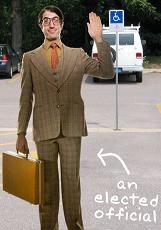Week two of Turning the Page 2.0 looked at how data from the public perception’s research can be used to help you “tell YOUR story”. The focus was on:
- Creating a compelling story about your library
- Practicing speaking skills
I was excited and looked forward to new things I would learn and be able to apply. This post will review points highlighted by the facilitator and provide personal insights along the way. Enjoy!
Story Time
Everyone likes a good story. However, what one person considers a good story may be a terrible story to someone else. The same is true for advocacy stories. Laurie Brown, our fantastic facilitator went through three types of advocacy stories:
- Anecdotal: A true account of something you saw or heard about
- Emotionally Inspiring: Designed to forge emotional connection
- Factual: Usually based on numerical figures and statistics
Each story-type listed has an ideal audience. The trick to a successful story is matching the appropriate type to the appropriate audience. Regardless of who is listening to your story, try to weave in the idea that the library is the center of their community. Provided you use compelling examples, people will identify with that. Show people why the library is important to THEM.
“A city without a library is like a city without a police station or fire department. Like a city without schools“ – Mille
Anecdotal stories have a lot to do with a storyteller’s ability to creatively and clearly convey a “particular incident or event, especially of an interesting or amusing nature” (dictionary.com). To be effective, it should connect with the listener, provide details instead of generalizations, be honest, and specific. Since this method is less data driven, it is effective with people who are more human centered.
Many of the same techniques used in preparing and delivering emotionally inspiring stories can be applied to audiences using anecdotal stories. Emotions are important in advocacy work. Laurie emphasized how crucial it is to have emotional inspiring stories. These sort of stories should NOT end with the audience in deep thought, laughter or tears. Instead, once you have conveyed a well crafted story and connected with your audience emotionally, be sure to follow with some sort of call to action.
“The library is like a defacto community center“ – Kathy
Factual stories should be used with groups that are number orientated (board of directors, city council, policy developers, public officials & researchers) and tend to be more focused on objectivity. They will be compelled by information that is verifiable and will be less likely to dismiss your story. While preparing a story for this group, be sure to selectively choose relevant data. Keep in mind that listeners will be judging the accuracy of the data presented.
Mix and Match
Although the previous section distinguished between three-types of advocacy stories, the best type is one that includes elements of each. Even if your audience is dominated by people who prefer one of the three types, having elements of each will ensure that the one person (who may be the biggest donor) in your audience who is compelled with something different will also be inspired by your advocacy story.
Week Two Takeaways
Problem – Solution – Opportunity
Lauded as a fantastic way to change the public’s perception, Laurie implied that sharing stories that employ the problem-solution-opportunity model was one strategy to cultivate supporters. A participant shared the following as an example of the framework in action.
- Problem: Was having an event, “noches en familia” and had problems funding the food
- Solution: Asking businesses in the community to sponsor the event
- Opportunity: Business can publicly announce that they are working with the “community”
TIP: A library can provide a solution to the range of problems a community has
 Parking lot speech
Parking lot speech
This speech is similar to the elevator speech. Things you can do to prepare the perfect parking lot speech include,
- Starting with shocking statistics of people who use the library
- Talking about how providing library access to particular groups (teenagers, incarcerated people) is beneficial to the whole community
- Sharing touching stories
- Paying attention to your tone of voice and demeanor
Your Turn
Using the information we had reviewed, we split up into 3 groups and developed a story for either
- A City Council Member
- A Member of a Local Service Organization
- A Community Volunteer
Rather than tell you what we came up with, take a moment and write a parking lot speech for one of the three stakeholders listed above. Don’t forget to share.
As always, if you have any questions or comments, use the space below.

2 thoughts on “Telling Your Story: Turning the Page – Week Two”
Right now 88% of the inmates at the Washington State Reformatory Library are registered users of the Library. This is a shocking statistic when you consider that 25% is considered high for the average public library. There are a couple inmates who keep a list of every book they’ve read while incarcerated. One has two notebooks full, over two thousand books. I am so happy to be involved with something that is so positive in an otherwise negative environment. The library not only gives the inmates something fun and productive to do but also promotes positive social interactions.
88%, that is very impressive. Considering the library is a popular place, it would be interesting to see what percent of them use the library at least once a month. Also, in addition to being a place that promotes positive social interactions, is fun & productive they can also begin to view the library as a resource after they are released.
Comments are closed.